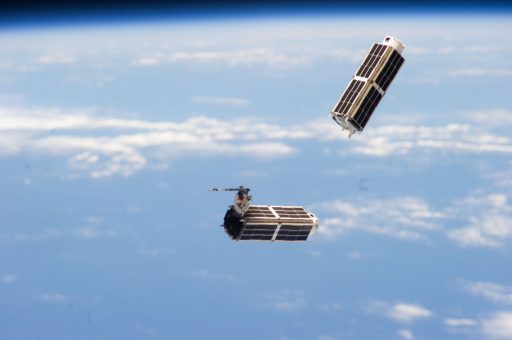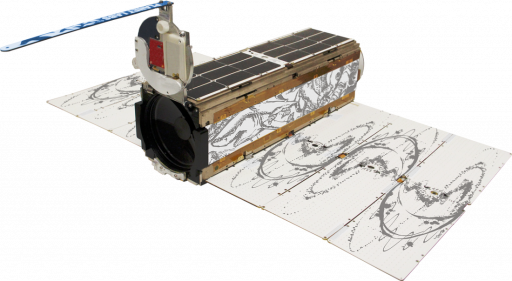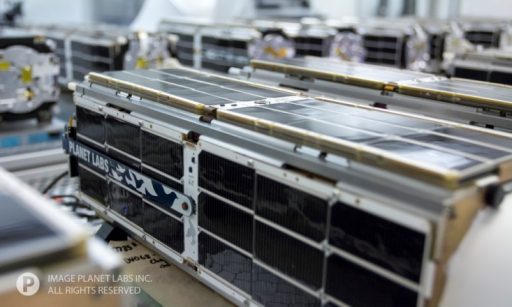Flock-3m CubeSats

Riding shotgun on the inaugural Minotaur-C mission are four Flock-3m CubeSats operated by Planet as part of the company’s large CubeSat constellation capable of imaging the entire Earth once every day. The four 3U Cube Sats installed in Tyvak RailPOD deployers will bring the total number of Doves launched into orbit to 275, utilizing space-based deployments from the International Space Station and different launch vehicles to establish the largest constellation in operation today.
The Minotaur-C mission carrying six SkySats and the four Flock-3m Doves is targeting a 500-Kilometer Sun Synchronous Orbit with a 13:30 equator crossing time – expanding Planet’s constellation – most of which is in a morning orbit – with afternoon-imaging capability. This will also allow areas of interest to be imaged twice per day in medium- and high-resolution and also enable activities that happen at different times in the day to be captured.

Planet’s Flock is a satellite constellation of CubeSats dedicated to Earth Observations using a fleet of small satellites to generate high-resolution images of Earth achieving resolutions of three to five meters. The operational constellation began deployment in 2014 and uses a combination of shorter and longer lived orbits being launched from the International Space Station and different orbital launch vehicles.
The satellites are designed, developed, manufactured and operated by Planet Labs based in San Francisco that markets the Earth Observation data products to a range of customers for a variety of applications.
“Our company goal is to image everywhere very frequently, for everyone,” said Robbie Schingler, co-founder of Planet Labs. “If you image everywhere, then that actually means that you can image anywhere. That’s going to be quite transformative for a number of countries, for a number of companies, and so forth. Our monitoring capability is always on. We are always taking a picture.”


The Flock spacecraft are based on the three-unit CubeSat specification having a launch mass of about 5 Kilograms and being 100mm × 100mm × 340mm in size featuring body mounted solar panels and two deployable solar arrays with three panels each using triangular advanced solar cells.
The solar arrays are spring-loaded and deployed by burn-wires once the satellites are released into their independent orbits. Flock spacecraft contain Lithium-Ion batteries that provide power to the various systems. A power distribution unit delivers power to all subsystems. The load bearing satellite structure consists of three skeleton plates, with L rails along each corner edge. Laser etched side panels are used for the Flock satellites.
Attitude data is provided by three-axis magnetometers to accomplish three-axis stabilization via a reaction wheel system and magnetic torquers for momentum management. Fine pointing data is provided by a Star Camera. Flock 1 satellites use a single-board computer to control all spacecraft and payload functions with a watchdog board able to reboot the flight computer in the event of errors or radiation related upsets.
The satellites use an X-Band system for the downlink of acquired images and systems telemetry at data rates of up to 120Mbit/s. Primary command uplink is done via S-Band, although a low-speed Telemetry and Command System operating in the UHF band is also available and in use for early commissioning operations and as a backup.
The main payload of each satellite is an optical telescope of unknown specifications to acquire high-resolution images of Earth. The telescope has an aperture diameter of 90mm and is protected by an aperture cover that is deployed via springs. The optical axis is down the central axis of the satellite to achieve a maximum focal length.

